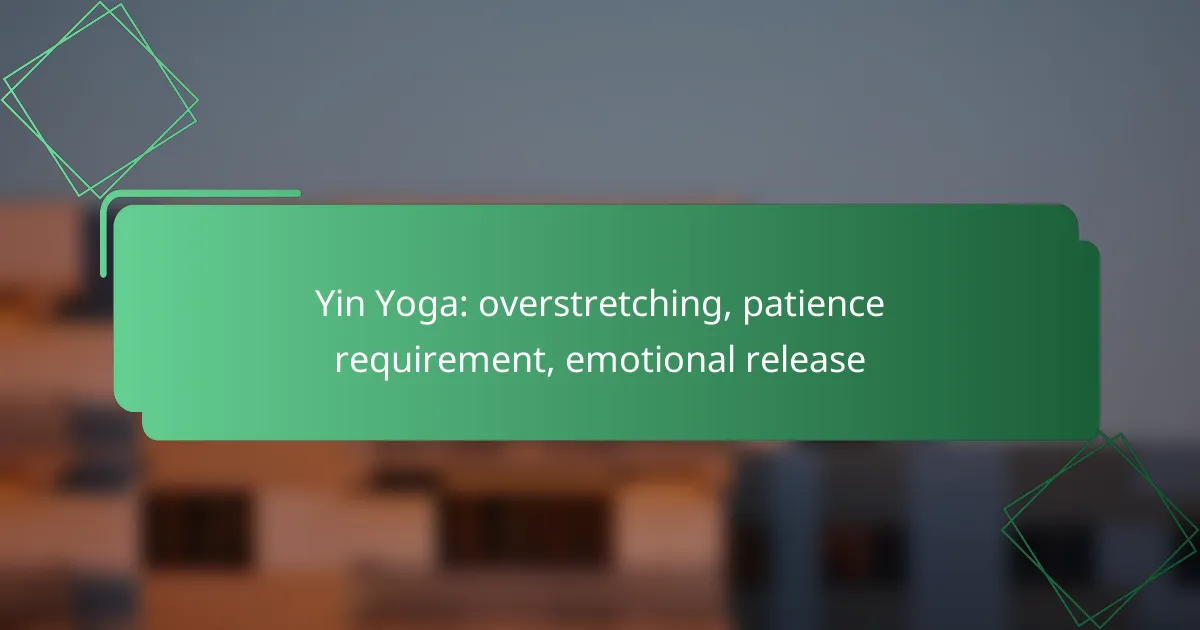Anusara Yoga is characterized by its strong emphasis on alignment, guiding practitioners to achieve correct body positioning for enhanced safety and effectiveness. While this focus fosters mindful movements and balance, it can also lead to potential rigidity, as individuals may feel pressured to conform to specific standards. Additionally, the sense of community within Anusara Yoga can both support and challenge practitioners, influencing their commitment to alignment principles and shaping their overall experience.

How does Anusara Yoga emphasize alignment?
Anusara Yoga places a strong emphasis on alignment, focusing on the correct positioning of the body to enhance both safety and effectiveness during practice. This approach encourages practitioners to engage in mindful movements that promote physical and energetic balance.
Principles of alignment in Anusara Yoga
The principles of alignment in Anusara Yoga are rooted in a deep understanding of anatomy and biomechanics. Key concepts include the use of “Universal Principles of Alignment,” which guide practitioners in achieving optimal body positioning. These principles encourage a connection between the heart and the body, fostering a sense of openness and stability.
Practitioners are taught to focus on specific alignment cues, such as grounding through the feet, lifting through the chest, and engaging the core. This attention to detail helps prevent injuries and enhances the overall experience of the practice.
Benefits of alignment-focused practice
Alignment-focused practice in Anusara Yoga offers numerous benefits, including improved posture, increased flexibility, and enhanced strength. By prioritizing alignment, practitioners can experience a greater range of motion and reduced tension in the body.
Additionally, this approach can lead to a deeper mind-body connection, promoting mental clarity and emotional balance. Practicing with an alignment focus encourages mindfulness, allowing individuals to cultivate a more profound awareness of their physical and energetic states.

What are the potential rigidity issues in Anusara Yoga?
Potential rigidity issues in Anusara Yoga often arise from its strong emphasis on alignment and precise postures. This focus can lead to practitioners feeling constrained or pressured to conform to specific alignment standards, which may hinder their natural movement and flexibility.
Common rigidity concerns
Practitioners may experience rigidity due to the strict adherence to alignment principles in Anusara Yoga. This can manifest as a reluctance to explore variations in poses or to listen to their bodies’ needs. Over time, this rigidity can create a mental block, making it challenging to adapt to different styles or personal limitations.
Additionally, the community culture surrounding Anusara Yoga can contribute to these rigidity concerns. Newcomers might feel pressured to meet the expectations set by more experienced practitioners, which can lead to anxiety and a fear of making mistakes in their practice.
Impact on practitioners’ flexibility
The focus on alignment in Anusara Yoga can negatively impact overall flexibility. When practitioners prioritize perfect alignment over their body’s natural range of motion, they may inadvertently limit their ability to stretch and move freely. This can result in tightness, particularly in areas like the hips and shoulders.
To counteract this effect, it is essential for practitioners to incorporate a variety of movements and styles into their routines. Engaging in complementary practices, such as restorative yoga or dynamic stretching, can help maintain flexibility while still benefiting from the alignment principles of Anusara Yoga.

How does community pressure affect Anusara Yoga practitioners?
Community pressure can significantly influence Anusara Yoga practitioners by shaping their commitment to alignment principles and their overall experience in the practice. This pressure may lead to a sense of belonging but can also create rigidity in how individuals approach their yoga journey.
Social dynamics within Anusara Yoga communities
Anusara Yoga communities often foster close-knit relationships among practitioners, which can enhance motivation and support. However, these social dynamics can also lead to conformity, where individuals may feel compelled to adhere strictly to group norms regarding alignment and practice styles.
Practitioners might experience a desire to impress peers or instructors, which can result in a reluctance to explore personal variations in practice. This pressure can inhibit individual expression and lead to a more rigid approach to yoga.
Effects of community expectations
Community expectations in Anusara Yoga can create a dual-edged sword. On one hand, they can encourage practitioners to maintain high standards of alignment and technique, promoting safety and effectiveness in practice. On the other hand, these expectations can lead to anxiety and self-doubt, particularly if individuals feel they are not meeting the perceived standards of their peers.
To navigate these pressures, practitioners should focus on their personal journey and prioritize self-acceptance. Setting realistic goals and recognizing that yoga is a personal practice can help mitigate the impact of external expectations, allowing for a more fulfilling experience.

What are the best practices for balancing alignment and flexibility?
Balancing alignment and flexibility in Anusara Yoga involves understanding how to maintain proper body alignment while allowing for natural movement and flexibility. Practitioners should focus on listening to their bodies and adjusting their practice to achieve this balance.
Techniques to maintain flexibility
To maintain flexibility, incorporate dynamic stretches and breath work into your practice. Techniques such as gentle forward bends and side stretches can help lengthen muscles while preserving alignment. Aim to hold stretches for around 15 to 30 seconds, allowing your body to gradually adapt.
Consider using props like blocks or straps to support deeper stretches without compromising alignment. For instance, using a strap in a seated forward bend can help you reach further while keeping your spine aligned.
Integrating personal practice with community standards
Integrating personal practice with community standards requires open communication and self-awareness. Engage with your yoga community to understand common alignment principles while also honoring your individual needs and limitations. This balance fosters a supportive environment where everyone can grow.
Be mindful of the pressure to conform to specific poses or alignment cues. Instead of rigidly adhering to community expectations, focus on your personal experience and progress. Regularly check in with yourself to ensure your practice remains authentic and beneficial.

How can practitioners choose the right Anusara Yoga class?
Practitioners can choose the right Anusara Yoga class by considering their personal goals, experience level, and the class’s focus on alignment. It’s essential to research instructors and studio environments to find a class that aligns with individual needs and preferences.
Factors to consider when selecting a class
When selecting an Anusara Yoga class, consider your experience level. Beginners may benefit from classes labeled as introductory or foundational, while more experienced practitioners can explore advanced sessions that delve deeper into alignment principles.
Another factor is the instructor’s qualifications and teaching style. Look for instructors with proper Anusara certification and those who emphasize a supportive, non-judgmental environment. Reading reviews or attending a trial class can help gauge compatibility.
Additionally, consider the class size and atmosphere. Smaller classes often allow for more personalized attention, while larger classes can foster a sense of community. Choose an environment where you feel comfortable and motivated to practice.
Local Anusara Yoga studios in major cities
In major cities, you can find several studios offering Anusara Yoga classes. For instance, in New York City, studios like Anusara Yoga NYC and YogaWorks provide a range of classes suitable for different levels.
In Los Angeles, studios such as Yoga Circle and The Yoga Collective offer Anusara classes that focus on alignment and community. Check their schedules online for class times and special workshops.
For practitioners in Europe, studios like Anusara Yoga Berlin and Anusara Yoga London are well-regarded. They often host events and teacher training programs, enhancing the community aspect of Anusara Yoga.

What are the emerging trends in Anusara Yoga?
Emerging trends in Anusara Yoga focus on innovative alignment techniques, community-driven adaptations, and a balance between structure and flexibility in practice. These trends reflect a growing awareness of individual needs and the importance of inclusivity within the yoga community.
Innovative approaches to alignment
Innovative approaches to alignment in Anusara Yoga emphasize personal interpretation and adaptability. Practitioners are encouraged to explore their unique body mechanics rather than strictly adhering to traditional postures. This shift allows for a more personalized practice that can accommodate various body types and abilities.
For example, teachers may introduce modifications that cater to individual limitations or preferences, fostering a more inclusive environment. This flexibility can enhance the overall experience, making yoga accessible to a broader audience.
Community-driven adaptations in practice
Community-driven adaptations in Anusara Yoga highlight the importance of collective input in shaping practices. Local yoga communities often share insights and experiences, leading to the evolution of techniques that resonate with their members. This collaborative spirit encourages practitioners to feel more connected and supported in their journeys.
Additionally, workshops and group classes may incorporate feedback from participants, allowing for real-time adjustments that reflect the needs of the community. This approach not only strengthens bonds among practitioners but also enriches the overall practice by integrating diverse perspectives.










